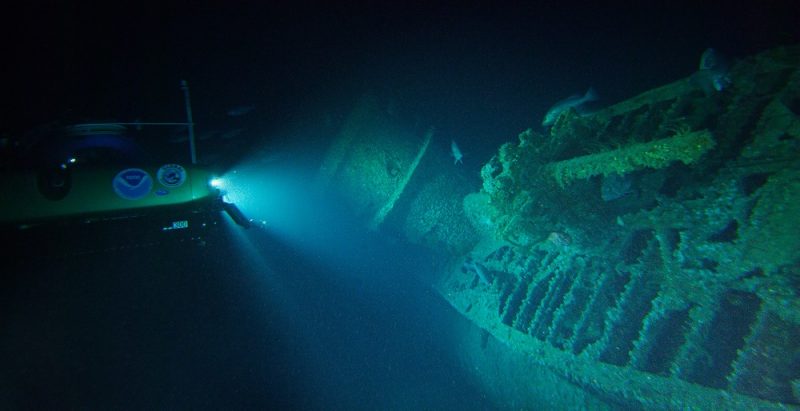They lay silent, at rest on the frigid, dim ocean floor. For the first time, searchers have swept the Atlantic Ocean graveyard, the location of some of the battles fought near the U.S. mainland during the Second World War.
In 1942, German and Allied navies fought in the Battle of the Atlantic in what David Alberg, spokesman for NOAA’s Monitor National Marine Sanctuary describes as possibly the largest battlefield in human history.
The war area went from the north and south Atlantic, from southern Africa to Iceland where German submarines sank a multitude of Allied ships. Some skirmishes occurred within a few miles of North Carolina’s Outer Banks. A NOAA submersible for the past few weeks has taken a closer look at the wreckage of the Allied Bluefields freighter and the German submarine U-576. The two vessels are under 750 feet of ocean water since 1942 and weren’t spotted by sonar until two years ago.
NOAA’s exploration was the first time in close to 75 years anyone had seen the submarine or Bluefields.
In mid-July 1942, U-576 fired a torpedo, sinking the Nicaraguan-flagged Bluefields in addition to damage other ships. Shortly after that, Allied charges by Navy seaplanes sank the submarine.
U-576 probably contains the bodies of 45 German sailors. All personnel on board the Bluefield were rescued before it sank to the bottom. The rest 1,600 men weren’t so fortunate. The mostly Allied sailors and merchant mariners died in battles off the North Carolina coast. Many of the survivors are now in their 90s, USA TODAY reported.
There is a very narrow window of time for this before the remainder of Second World War veterans pass away, Alberg said.
The submarine belongs to the German government, who said two years ago it has no interest in recovering any bodies or wreckage, according to LiveScience.
NOAA is hopeful its mission will save a little-known chapter of American history and assist in helping to memorialize the sacrifices of men and women who perished in what is the only Second World War battlefield on the Eastern Coast of the U.S., Alberg said. As with Gettysburg, this ocean-based war area should receive the same reverence. NOAA could increase the close-by Monitor National Marine Sanctuary, the location of the famous Civil War ironclad vessel, to include the U-576, the Bluefields, and additional shipwrecks.
Both NOAA’s Office of Ocean Exploration and Research, the University of North Carolina’s Coastal Studies Institute and the Bureau of Ocean Energy Management took part in the mission.
